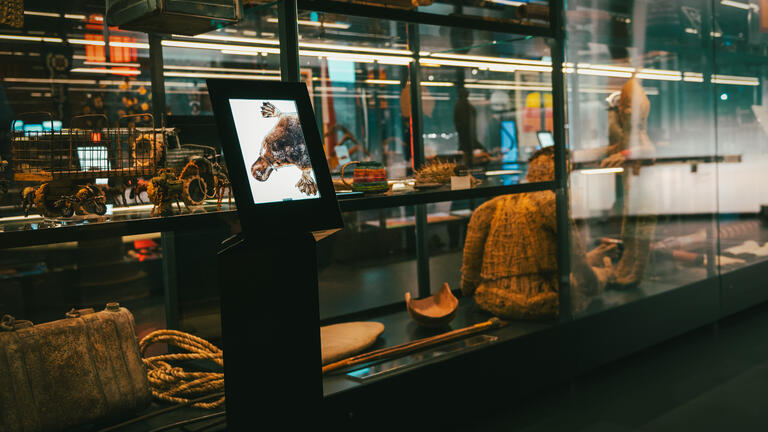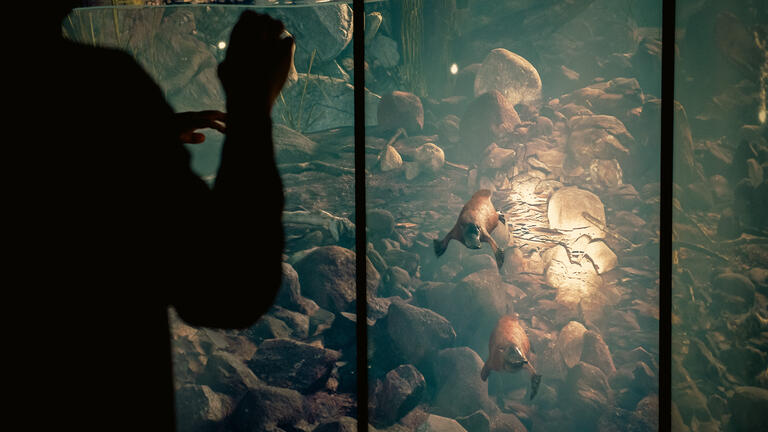Epic and Elemental
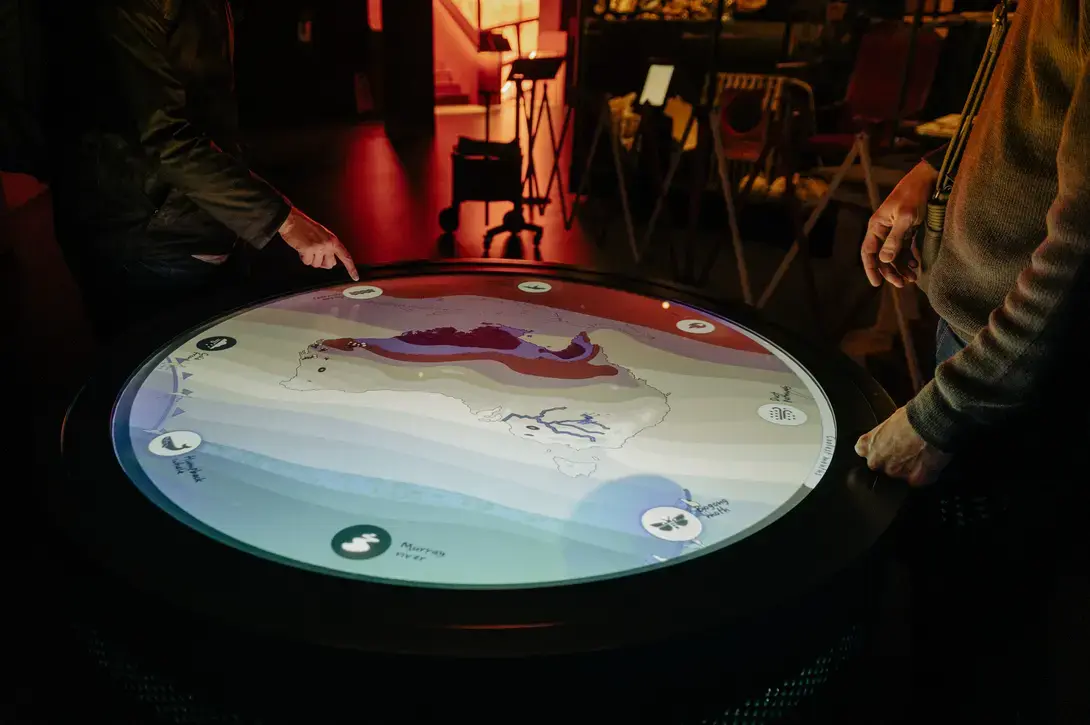
Great Southern Land
Canberra, Australia
The National Museum of Australia (NMA) commissioned Art Processors to design, produce, and provide ongoing support of all interactive media for its landmark permanent exhibition, Great Southern Land, which opened in 2022.
Great Southern Land tells the story of Australia as an ancient continent shaped by connected, elemental, biodiverse forces and is the National Museum of Australia's most significant gallery redevelopment since it opened in 2001. We worked with scientists and subject matter experts to create one-of-a-kind activations that invite visitors to discover Australia’s awe-inspiring landscapes and native species.
Our interactive exhibits are the result of a co-design process with the NMA's amazing team. The combination of their subject matter expertise with our design and technology offering has created a series of novel experiences in the new gallery that allow the audience to connect deeply with Australia's natural landscape.
– Tony Holzner, Founding Principal, Art Processors
Through six activations using exploration and play, visitors discover new ways to see the Australian environment, consider their role within it and explore how understanding the land can help guide us through the environmental challenges of the future:
Platypus: created on an aquarium-like, semi-circular digital display, Platypus uses state-of-the-art motion-tracking technology to pick up visitors’ gestures so they can interact naturally with a 3D-animated creature, and in the process, learn about this elusive species in its underwater world. Shine a digital torch around the riverbed and you find out how the platypus evolved and adapted to Australia’s changing climate over millions of years, its daily life now, and the challenges it faces in the decades ahead.
Iconic Species: a collaborative drawing experience that invites visitors, young and old, to learn about some of the country's best-known species through drawing, then contribute their artistic interpretations. Artworks are displayed on adjacent screens and projected within the exhibition space, creating a dynamic, evolving gallery of visitor contributions.
Pathways: this touchtable uses an interactive satellite view of how seasonal events, such as temperature, ocean currents, and migration patterns, change over a year. Visitors use their hands to explore how natural elements are linked by intersecting pathways, rhythms and flows that characterise Australia and its seasonality.
Ice Core: an interactive table where visitors explore the impact of rising temperatures and CO2 levels over time and test future scenarios and how their actions impact climate. Visitors look into different moments in Australia’s history, including their own birth date, and project forward to test future scenarios and how their actions may impact climate over their lifetime and beyond.
Heartbeat: a multisensory installation that immerses visitors in the dynamic rhythms of Australia's natural environment. Visitors are enveloped by the calls of magpies, the rustle of kangaroos, the laughter of kookaburras, the buzz of desert flies, and the gallop of wild brumbies. Light and audio bring to life graphic illustrations of iconic Australian life.
Conclusions: visitors locate a place in Australia that is meaningful to them, customise it, and share it on a huge map and projection featuring other visitors' contributions. The map includes Indigenous place names, highlighting the rich linguistic diversity of the continent. It’s a reflective and participatory experience, creating a shared mosaic of places that matter to Australians, accompanied by an immersive soundscape of natural sounds and the pulse of the continent.
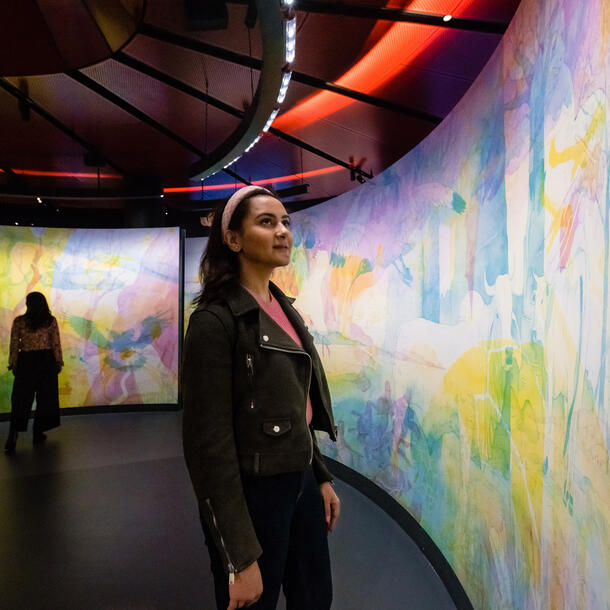
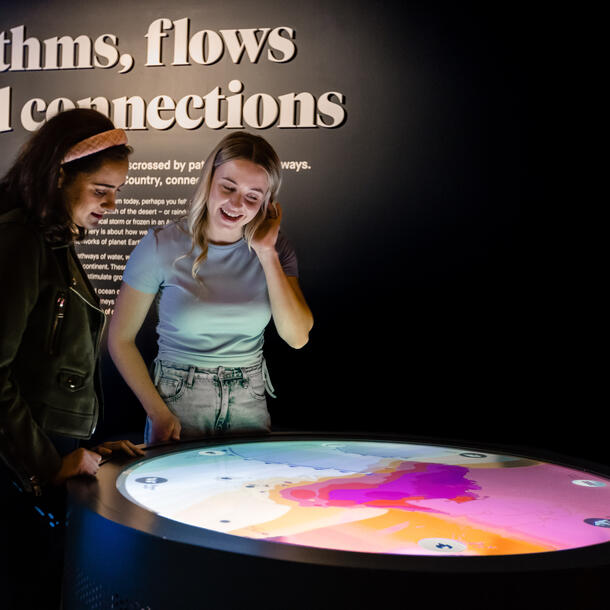
We wanted to give people the opportunity to explore with their hands to discover how all the elements of the environment are interconnected. It’s a kinetic, playful journey that’s also emotive and beautiful.
– Jamie Houge, Project Manager, Art Processors.
Our work on Great Southern Land took place during the Covid-19 pandemic so we couldn’t be as hands-on as normal with user testing. Our prototyping space at Art Processors HQ was pushed to the limits. A large touchscreen was rigged up to carry out a base level of testing of the complex technology. To test the content, we set up lo-fi versions of each interactive and used video chat to run through scenarios with real people, including young children.
